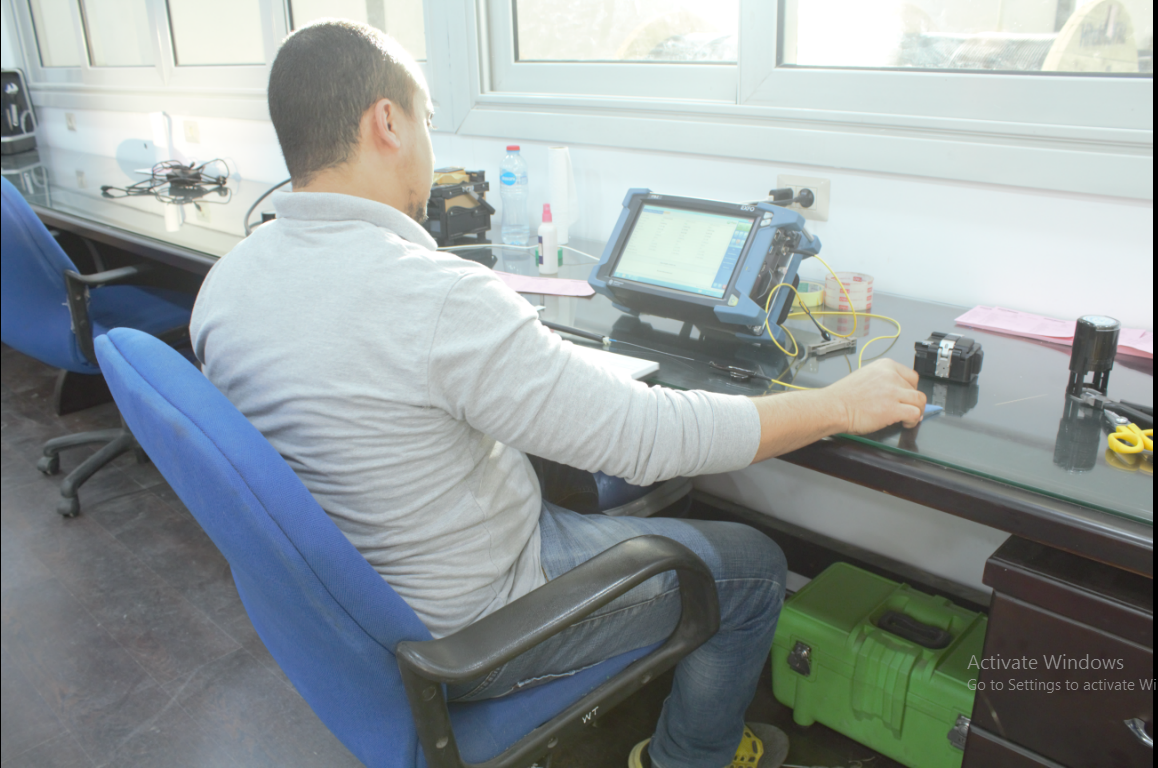
Production Testing
We conduct routine production tests online; Aging tests, physical tests, cable dimensions
We then use these test results for internal quality control and process feedback.
Environmental Chamber tests
We run the following environmental tests in full accordance with IEC 60794 standard.
- Water penetration
To check whether the interstices of our fiber optic cables are filled with a compound to prevent water penetration in the cable, we perform a water penetration test. During the procedure, we remove a 25 mm wide circumferential portion of the sheath and wrapping from one end of a 3 m long, sample cable and we apply a watertight sleeve over the exposed core, so as to bridge the gap in the sheath. While we support the cable horizontally, we apply a 1 m head of water to the core for 24 hours at a temperature of 20±5 C.
The water contains a sufficient quantity of water-soluble fluorescent dye for the detection of seepage.
We can inspect 8 samples at the same time.
- Temperature cycling test
We effectuate this test to determine the effect of the temperature on the fiber attenuation.
We can inspect in deferent temperatures from -70
- Compound flow (drip test)
This test is intended to verify that filling and flooding compounds will not flow from a filled fiber optic cable, at stated temperatures, we have oven up to 300 oC.
Attenuation test
We measure every fiber in every cable for both, optical loss (end-to-end loss measurement) and inspection for point discontinuities on every fiber; to obtain meaningful, repeatable measurements, we perform the test on finished cables. More specifically and in full accordance with IEC 60793, ITU-T G. 652, G.655, G.656, and G.657 standards, we measure single mode fibers at wavelengths of 1310, 1550 and 1625 nm and multimode fibers at wavelengths of 850 and 1300nm.
Type testing
To ensure that our fiber optic cables function properly under a range of adverse mechanical and environmental conditions, we perform type testing, in which fiber optic cables of a particular type are tested as representatives of the whole family of cables of that type. This testing involves mechanical, optical, environmental and compatibility tests.
Mechanical tests
Our mechanical tests are in full accordance with IEC 60794 standard.
- Tensile strength – Here we examine the behavior of the attenuation and fiber strain as a function of the load on cable. ??
We have a tensile machine up to 10,000 N.
- Crush resistance test
To determine the ability of
We have a
- Impact test
To determine the ability of our fiber optic cables to withstand impact, we run this test, during which a specified mass (m) is dropped from a specified height (h) per the specifications IEC–794–1–2E4.
- Repeated bending test
To determine the ability of our fiber optic cables to withstand repeated bending, we run this test where the cable is fixed and loaded with a certain weight. The cable is then bent backward and forward so that the two extreme positions form a 90º angle on both sides of the apparatus. The bending rate is approximately one cycle in two seconds.
- Torsion
To determine the ability of our fiber optic cables to withstand bending, the cable is mounted into the apparatus and loaded with a specified
Our machine capable to twist the cable with 45o, 90o and 360o and any number of twists up to 999
- Bending under tension (sheave test)
To determine the ability of our fiber optic cables to withstand bending during installation.
Dimensional tests
Our dimensional tests are carried out to check the cable diameter, thickness, and eccentricity. Inner and outer sheath thickness of our fiber optic cables
Quality Control
The laboratory accommodates leading-edge production processes, including assembly product testing, and in-process & final product inspection, and meets TIA (Telecommunications Industry Association) and ISO standards.
